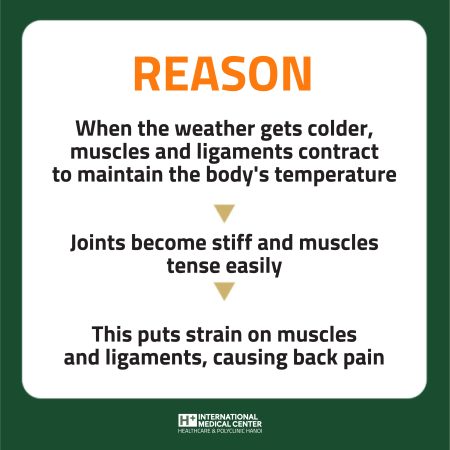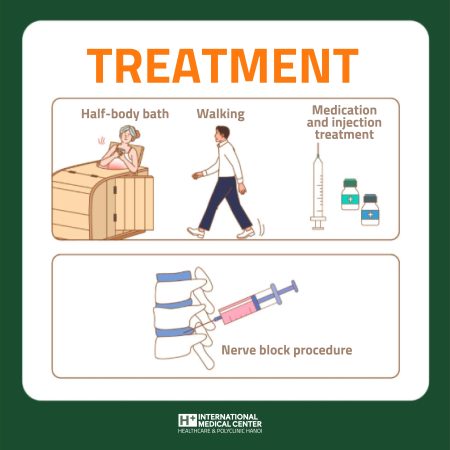1. Why Back Pain Increases with Seasonal Changes
When temperatures drop, muscles and ligaments contract to maintain body heat. This natural response leads to stiffness in the joints and tension in the muscles, which makes them more susceptible to strain and injury. Overexertion during this time can easily trigger back pain.
2. What is Lumbar Disc Herniation (Herniated Disc)?
Lumbar disc herniation, commonly known as a herniated disc, occurs when the disc between the vertebrae in the lower back is damaged by ongoing pressure or stress. This damage can cause the disc to slip out of place, pressing on nearby nerves and causing pain. While herniated discs are often related to aging and the weakening of the disc’s outer layer, other causes include genetics, lifestyle factors, and injuries.
Symptoms can range from severe back pain to numbness or weakness in the legs, and in advanced cases, even minor actions like coughing can worsen the pain.
3.What is Spinal Stenosis?
Spinal stenosis occurs when the spinal canal narrows due to age-related changes, compressing nerves and leading to back pain. Though it shares some symptoms with herniated discs, stenosis often causes more frequent and intense pain, including sharp discomfort around the hips and weakened leg muscles.
- Pain typically subsides while sitting but returns after extended walking. Many find relief by leaning forward slightly, which temporarily opens the narrowed canal and reduces pressure.
4.Key Differences Between Lumbar Disc Herniation and Spinal Stenosis
- Lumbar Disc Herniation: Pain generally worsens when bending forward, lifting legs, or during prolonged sitting or standing, often radiating through the lower back and legs.
- Spinal Stenosis: Pain tends to flare up when leaning backward or walking, with severe leg pain that may require frequent rest.
5.Treatment Options
In the early stages, non-surgical treatments like medications, injections, and therapeutic exercises can often provide relief. If pain persists, nerve blocks can be considered. Surgery may be necessary in advanced cases, especially if symptoms include paralysis or issues with bowel and bladder function.
- Walking regularly is highly beneficial for spinal health, as it naturally strengthens core muscles and improves flexibility. Stronger muscles reduce spinal pressure and provide stability.
- Additionally, warm baths (37-39°C) promote circulation and help relax tight joints and muscles, easing back pain and improving mobility.
For those experiencing back pain during seasonal transitions, monitoring symptoms closely and seeking guidance from a healthcare provider is key to effective, long-term management.
 +84 24-7306-9889
+84 24-7306-9889  Booking
Booking 





